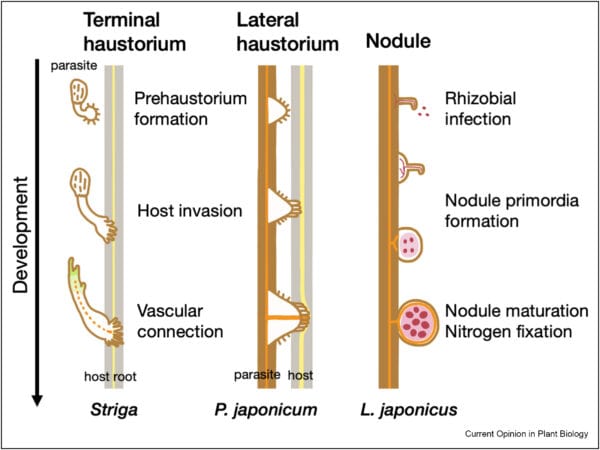Plants have evolved various strategies to adapt nutrient limited condition. As a reflection, parasitic plants and legume species produce specialized organs, the haustorium and the nodule, respectively, in order to acquire unique routes for nutrient uptake through intimate interaction with surrounding organisms. Initiation and developmental progression of haustorium and nodule require signal guidance from the interacting partners and acquisition of new cell fates regulated by intrinsic hormonal and gene networks. Albleit their independent evolutionary origin, emerging studies have shown a certain degree of commonality in the regulatory system of both organs. This review (Cui et al., 2023. Curr. Opin. Plant Biol.) summaries recent advances on the molecular control of haustorium development in Orobanchaceae species and root nodule establishment in legume family with step-by-step comparisons, with the focus on the common regulatory roles of phytohormones and environmental nitrogen at different stages of corresponding organogenesis.
Reference:
Cui S, Inaba S, Suzaki T, Yoshida S (2023) Developing for nutrient uptake: Induced organogenesis in parasitic plants and root nodule symbiosis. Curr. Opin. Plant Biol. 76: 102473
Link for the article:
https://doi.org/10.1016/j.pbi.2023.102473
Author information:
Songkui Cui
Kunming Institute of Botany, Chinese Academy of Sciences, China
Shoko Inaba
Nara Institute of Science and Technology, Graduate School of Science and Technology, Japan
Takuya Suzaki
Faculty of Life and Environmental Sciences, University of Tsukuba, Japan
Satoko Yoshida
Nara Institute of Science and Technology, Graduate School of Science and Technology, Japan
